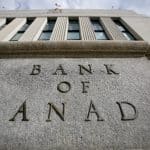FRANKFURT — The European Central Bank cut its benchmark interest rate to a record low Thursday and, in an unprecedented attempt to stimulate the eurozone economy, said it would begin charging interest on deposits held by the bank.

[
Michael Probst,The Associated Press
European Central Bank president Mario Draghi said Thursday the bank is prepared to take further steps to stimulate the eurozone economy.]
The so-called negative deposit rate has never been tried on such a large scale and is a bid to push down the value of the euro and encourage banks to invest excess cash rather than hoard it in central bank vaults.
The ECB cut its benchmark interest rate to 0.15 per cent from 0.25 per cent, and the deposit rate to minus 0.10 per cent from zero. The rate cuts will take effect next week, on June 11.
The central bank will also begin offering four-year loans to banks at the benchmark interest rates, under conditions meant to ensure that lenders use the money to issue loans to businesses. For example, the central bank loans will be designed to discourage banks from using the money to buy government bonds.
Mario Draghi, the central bank’s president, said at a news conference that the bank would begin buying packages of loans made to the eurozone private sector, known as asset-backed securities. The measure is designed to push lending to small businesses, but the effect could be limited because the number of securities that qualify is relatively small.
The interest rate cuts, including the move to a negative rate on deposits, had become all but certain after data earlier in the week showed that inflation in the eurozone fell to an annual rate of 0.5 per cent in May, a level considered perilously low.
The fear is that the minuscule rises in wages and prices could lapse into outright declines – an economically debilitating condition known as deflation that is characterized by a downward spiral of prices, corporate profits and hiring. Deflation has already plagued the economies of several of the weaker eurozone countries, including Greece.
“Ultimately the macroeconomic consequences of a small negative rate are likely to be minimal,” Luke Bartholomew, a fund manager at Aberdeen Asset Management, said in a note after the central bank’s announcement. “But it should put downward pressure on the euro and it is an important signal of the ECB’s deflation fighting intent.”
Imposing a negative deposit rate is meant to give a positive jolt to the eurozone economy. In the annals of central banking, though, negative deposit rates have rarely been tried. Denmark had one until April, but the impact on an economy as large as the eurozone’s is largely unknown.
“Negative deposit rates have not been used at this scale before and could have unpredictable consequences,” Christian Schulz, a senior economist at Berenberg Bank, said in a note ahead of the central bank meeting.
Many economists have already criticized the moves, which were widely expected, as inadequate to combat the deflation threat that Draghi has acknowledged.
As a result, the reaction and commentary is now likely to focus even more on whether the bank will sooner or later be forced to buy government bonds or private assets in amounts large enough to restart lending in areas of the eurozone that are starved of credit.
The United States, Britain and Japan have all used such asset buying – so-called quantitative easing – to jump-start their economies when there was no room left to cut interest rates.
But the ECB has been reluctant to do so, in part because of the politically treacherous task of selecting which assets to buy from among the eurozone’s 18 quarrelsome members.
But in response to a question at the news conference about quantitative easing, Draghi seemed to leave open that possibility.
“We think this is a significant package,” he said of the moves Thursday. “Are we finished? The answer is no. If need be, within our mandate, we aren’t finished yet.”
The central bank last cut interest rates in November. During the last month, Draghi and other members of the central bank’s governing council have sent strong signals that a negative deposit rate was in the works, in part to allow banks to prepare.
The prospect of a negative deposit rate has already contributed to a decline in the euro currency against the dollar in recent weeks, as investors moved their money to places offering a better return.
One of the bank’s aims is to weaken the euro, which allows exporters in the eurozone to sell their products more cheaply abroad. A weaker euro also tends to push up inflation by raising the prices of fuel and other imported goods.
New York Times
By Jack Ewing












